Discovering the Architectural Wonders of Shizuoka

Japan is home to one of the finest architectural structures in the world. Here, we venture into the beautiful landscapes of Shizuoka Prefecture and explore its magnificent buildings.
Day 1 Tokyo → Atami
Our architectural journey leads us to Atami, a charming city situated on the northeastern coast of the Izu Peninsula. Renowned for its coastal resorts and soothing hot springs, Atami is a favored escape for Tokyo residents, thanks to the short 40 to 50-minute journey on the Tokaido Shinkansen from Tokyo Station. While its hot springs garner widespread popularity, Atami is teeming with both modern and traditional architecture. Our exploration begins at the illustrious MOA Museum of Art.
Take a bus from JR Atami Station bus terminal 8 to MOA Museum of Art, which takes approximately 7 minutes.
MOA Museum of Art

The MOA Museum of Art's location is breathtaking in itself. Upon arriving at the entrance, visitors are enveloped in lush greenery, setting a serene stage for the building's understated architectural design made of Indian sandstones. This simplicity forms a striking contrast with the spectacular views the museum offers from its hilltop perch, overlooking both sea and cityscape. Undergoing an extensive 11-month renovation from 2016 to 2017, the museum marked a new era since its initial opening in 1982. The New Material Research Laboratory spearheaded the transformation, headed by contemporary artist Hiroshi Sugimoto and architect Tomoyuki Sakakida. They aimed to create a space that harmoniously blends traditional materials with modern technology, enhancing the visitor experience. It is an absolute delight to roam the common areas and galleries as each section narrates its own story.

Stepping into the lobby, visitors are guided by a flight of escalators leading to the main building. Its iconic arched tunnel bathed in a spectrum of light ushers you into a mesmerizing world of arts and beauty. Once you reach the top, a 20-meter-wide dome crafted with marbles from six different countries welcomes visitors with an explosion of vibrant colors.

The hall features the world's largest kaleidoscopic installation of art by Mitsuru Yoda and Yuriko Yoda projected onto the ceiling. As you marvel at this spectacle, the experience is elevated as you are serenaded by an original composition of Yuriko Nakamura, a world-renowned pianist.

Japanese Garden

Another notable feature you shouldn't miss is the museum's garden, which provides a sanctuary that heals the soul with its cultural treasures and natural splendor. Each passing season transforms the garden into a distinctive beauty beyond words. The early summer transitions the landscape into luscious greenery accentuated by vibrant flowers. In contrast, autumn to early winter turns it into a crimson paradise as 150 maple trees carpet the whole area with a stunning array of autumn hues.
Strolling through the garden, you'll find a section that houses two Japanese-style restaurants – Hana-no-Chaya and Nijo-shinmachi Sobanobou- offering unique culinary experiences. Hana-no-Chaya specializes in delectable Japanese cuisine crafted from organic local ingredients. At the same time, Nijo-shinmachi Sobanobou is famed for its 'Kirishita' soba (buckwheat) noodles, known for their rich flavor, enticing aroma, and perfect al dente texture.


These restaurants are strategically located, flanking the final residence of Korin Ogata, a Japanese artist acclaimed for his mastery of the Rinpa aesthetics characterized by vivid colors and themes drawn from nature, literature, and classical Japan. While contemplating your dining options, take a moment to venture into this sukiya-style house. It stands as a window into the opulence of Japan's affluent classes during the 18th-century Edo period. The *atelier on the second floor is particularly noteworthy as it's said to be where Korin created his most famous work, the 'Red and White Plum Blossoms,' which is a masterpiece now recognized as a National Treasure.
(*The atelier is not open to the public)


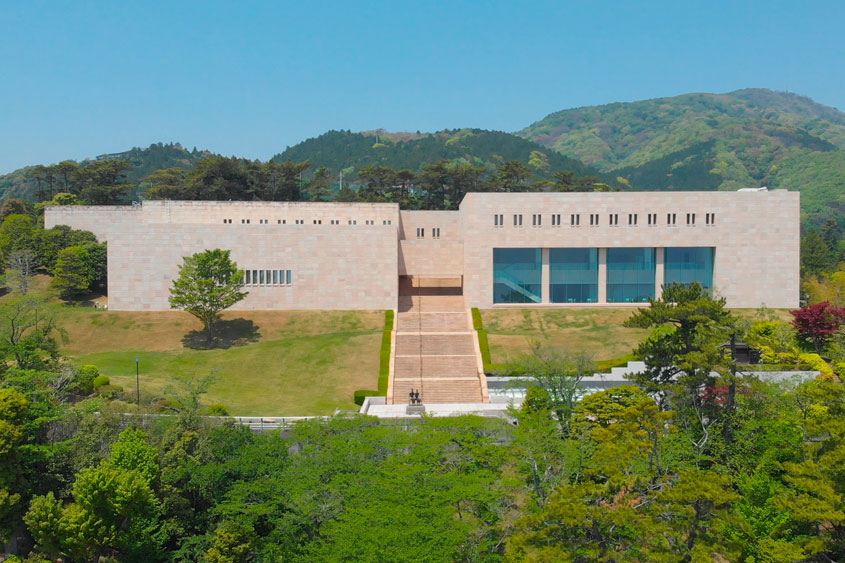
Take a bus from the MOA Museum of Art stop to the Heiwa-dori Shopping District, which takes approximately 5 minutes.
Atami Heiwa-dori (Peace Street) Shopping District

If you opted to immerse yourself in the arts and galleries of the MOA Museum of Art and missed lunch at its restaurants, don't worry – you're in for a treat. The Heiwa-dori Shopping District, just a minute's walk from Atami Station, is lined with shops, restaurants, and cafes that have been in business for over 60 years.

Start your culinary journey at one of the shops selling onsen manju and enjoy walking down the street admiring the atmosphere as you savor this lightly sweet bun. Heiwa-dori is the perfect spot to sample a variety of street foods and local delicacies that Atami is known for. Indulge in shops selling himono (dried fish), onsen manju (steamed bun with filling), sushi, and sashimi seafood bowls, brimming with a diverse selection of the freshest seafood.
Seafood bowl details:
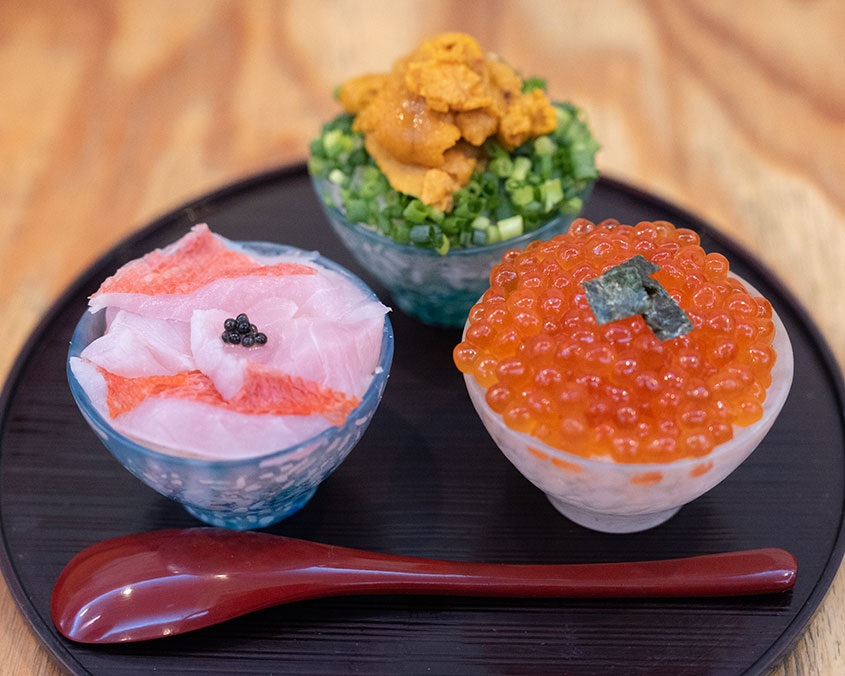
Atami Ekimae - Osakana Donya
- Place
- 3-7 Tawaramotocho, Atami City, Shizuoka Prefecture 413-0011
- Time
- 10:00 AM – 5:00 PM
- Link
- https://www.osakanadon-atami.com/
Take a bus from Heiwa-dori Shopping District's Fujisawairiguchi bus stop to the Tenjin Town bus stop, which takes approximately 7 minutes.
Kiunkaku

Have you ever wondered what seeing a fusion of traditional Japanese and Western architectural styles in a villa would be like? If that piques your interest, this will surely tickle your imagination. Kiunkaku was built in 1919 by Nobuya Uchida. It was later transformed into a high-class ryokan (Japanese inn) in 1947. Renowned as one of the top three villas in Atami, a stroll through its garden will soothe you with its lush greenery.
One of its main buildings showcases traditional Japanese architectural techniques, with intricate designs and accents that offer a glimpse into fine Japanese craftsmanship. Meanwhile, the other main building, constructed in 1929, was inspired by Western architecture, featuring hints of Japanese and Chinese décor. One of its highlights is a large Roman thermal bath. Each room in the villa has its own rich history.

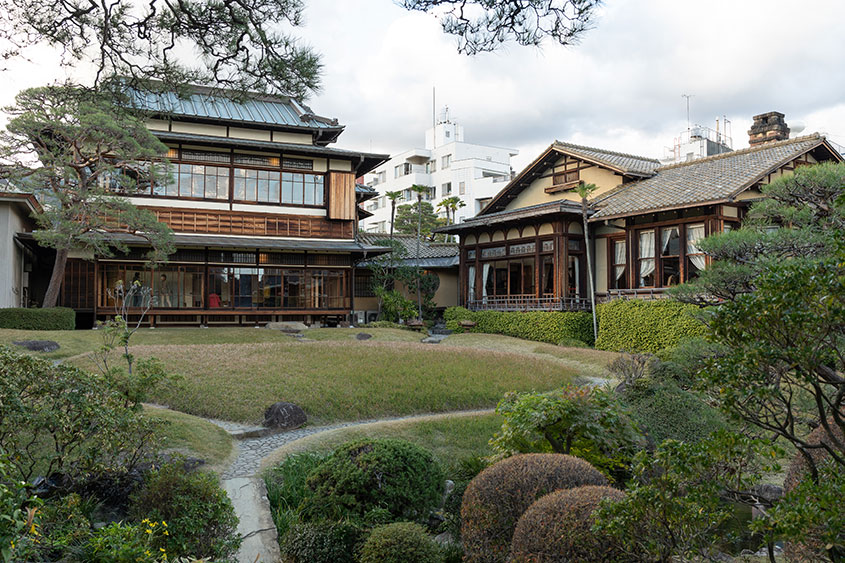
Kiunkaku
- Place
- 4-2 Showa-cho, Atami-shi, Shizuoka, 413-0022
- Time
- 9:00-17:00 (entry until 16:30)
- Closed
- Wednesdays (unless it is a national holiday), December 26-30
- Admissions
- ¥610 (¥460 with the Atami 1-Day Pass)
- Link(Japanese)
- https://kiunkaku.jp/
Take a bus from Kiunkaku Nishiguchi bus stop to Atami Station, which takes approximately 10 minutes.
ATAMI Kaihourou – Accommodation
Welcome to ATAMI Kaihourou – where art, fine architecture, and relaxation beautifully intertwine. Constructed in 1995, this luxury resort not only offers guests the warmth of Japanese hospitality but also an immersion into both traditional and modern Japanese architecture designed by the renowned Kengo Kuma.

The hotel takes pride in its exquisite glass artworks and the impressive paintings adorning the fusuma (Japanese sliding doors) in the hall, which harmoniously blend with the glorious seascape of Atami.

In addition to its ocean-view suites featuring in-room hot springs, a standout feature is the water balcony, an embodiment of the resort's essence. This glass villa, surrounded by water, appears to float in serene tranquility. It draws significant inspiration from Bruno Taut's Hyuga Villa, the only project he completed in Japan.

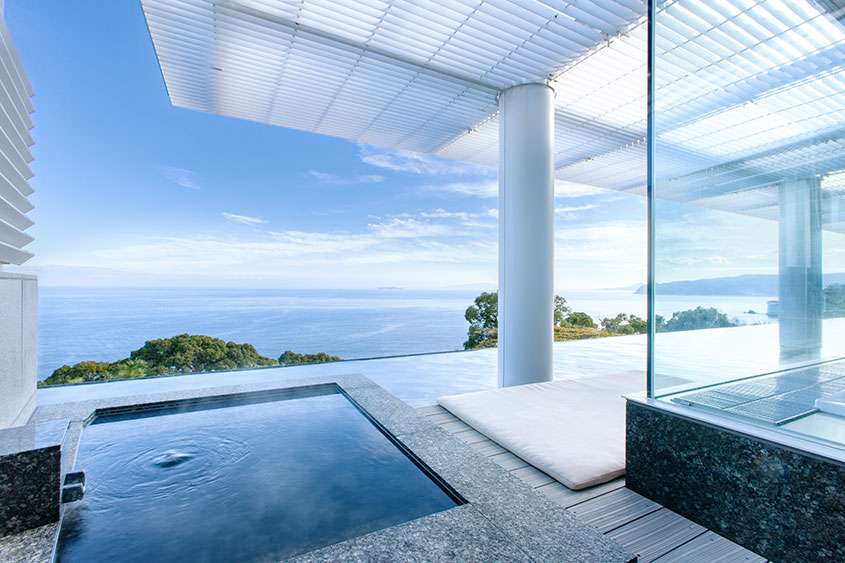
ATAMI KAIHOUROU
- Place
- 8-33 Kasuga-cho, Atami City, Shizuoka Prefecture 413-0005
- Link
- https://www.atamikaihourou.jp/en/
Day 2 Atami → Fujinomiya
Our journey continues to Fujinomiya. A city in the eastern part of Shizuoka Prefecture, home to the world-famous UNESCO World Heritage Site, Mt. Fuji. Fujinomiya not only has Mt. Fuji as its crowning glory but is also celebrated for its rainbow trout, various breweries, rich dairy products, and the local culinary delight, Fujinomiya Yakisoba. Now, let us delve into the magnificent architecture this city has in store for us.
Mt. Fuji World Heritage Centre, Shizuoka
Mount Fuji is not only a symbol of Japan but has also been a central theme in numerous Japanese artworks, literary works, and cultural icons for centuries. Therefore, it's no surprise that there's a dedicated facility to enhance understanding and appreciation of its cultural significance.

The building's distinctive crisscross pattern, a brainchild of Shigeru Ban, symbolizes Mount Fuji. This ingenious design harmoniously blends the structure with its environment, reflecting the profound connection between the landscape and the cultural heritage tied to Mount Fuji. Embodying Ban's innovative vision, the central building is constructed as an inverted cone, its walls graced with latticed wood. When mirrored in the pool of water at its forefront, this structure creates a mesmerizing illusion of a majestic mountain akin to Mount Fuji. Additionally, the presence of a torii (Japanese shrine gate) outside its walls serves as a poignant reminder of Mount Fuji's revered status as a sacred site.
Inside, the Centre is just as impressive. A cleverly designed spiral slope leads to an observation hall offering stunning views of Mount Fuji. The journey up the hill, dimly lit and accompanied by nature sounds, simulates a mountain-climbing experience. Projected scenes from the Mount Fuji landscapes and imagery of mountain climbers enhance this realistic encounter.

Trekking up the virtual slope of the Centre is bound to work up an appetite. Fortunately, the Museum Café & Shop offers a unique dining experience featuring an array of food inspired by the natural bounty of Mt. Fuji. Situated on the first floor's atrium facing the water basin, visitors can savor freshly ground coffee made with spring water from Mt. Fuji and enjoy the café's signature food, the Fujiyama Beef Burger. This welcoming space is accessible to all, allowing you to visit without needing exhibition tickets.


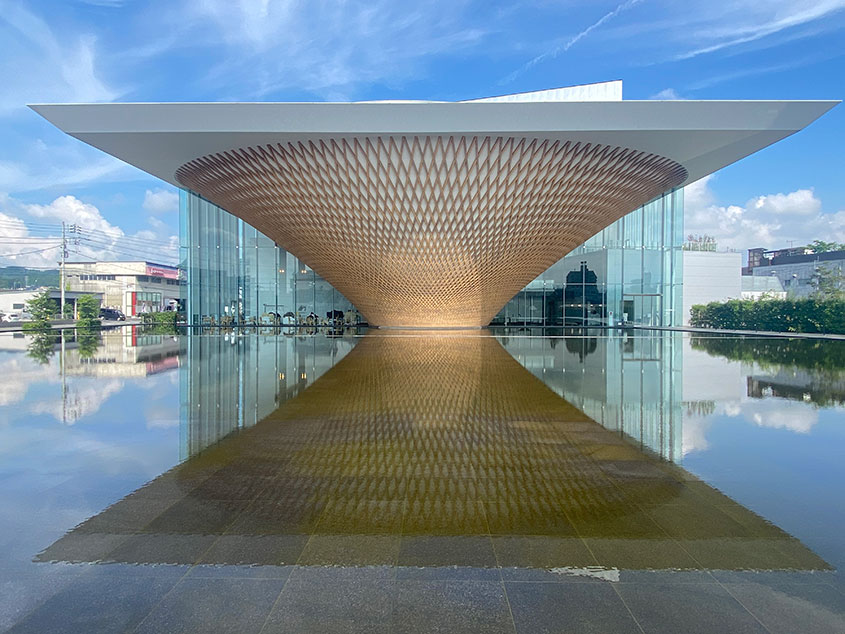
Mt. Fuji World Heritage Centre, Shizuoka
- Place
- 5-12 Miya-cho, Fujinomiya City, Shizuoka Prefecture 418-0067
- Time
- 9:00 AM – 5:00 PM (July – August: 9:00 AM – 6:00 PM) *Last admission is 30 minutes before closing.
- Closed
- Third Tuesday* of each month, year-end holidays, and inspection days
*If the third Tuesday is a holiday, closed the next day instead - Link
- https://mtfuji-whc.jp/en/
Walk towards Fujinomiya Station (11 mins), then take the train to Higashi-Shizuoka Station, which takes approximately 45 minutes.
Shizuoka Performing Arts Centre (SPAC)

Established in 1995 by the Shizuoka Prefecture, SPAC provides a haven for performing arts artists to manifest their creativity and foster collaboration at both national and international levels. Being the first of its kind, this publicly founded cultural organization has its own residential actors, technical staff, and administrative personnel, including its own theaters and artistic facilities.
Shizuoka Arts Theatre

A key facility under SPAC, the Shizuoka Arts Theatre serves as a venue for various productions, including those produced by SPAC, such as international festivals, educational programs, and other cultural events. Located at the forefront of Granship (Shizuoka Convention & Arts Center), its expansive stage lacks a traditional proscenium, fostering a more intimate connection between performers and the audience. This ingenious design, conceived by architect Arata Isozaki, ensures that the stage's influence and power resonate from every seat.
Take a 3-minute walk towards the Higashi Shizuoka Sta. Ent (South) Bus Stop, then take the Nihondaira Line (42) bus to the Shizuoka Performing Arts Park, which takes approximately 13 minutes.
Shizuoka Performing Arts Park
Located in the tranquil foothills of Nihondaira, the Shizuoka Performing Arts Park is another pivotal base for SPAC. Spanning an area nearly four times the size of Tokyo Dome, the park has three uniquely designed theatres, rehearsal spaces, a tea farm, and accommodation for training and exchange programs.
Architectural Highlights:
•Outdoor Theater 'Udo' – Born from Arata Isozaki's ingenuity, Udo is inspired by ancient Greek theater and embodies the park's philosophy of coexistence and harmony with nature. Watching a performance here is akin to 'hitting two birds with one stone,' as it also offers an immersive experience of nature's sights and sounds. Another unique feature of this theatre is the path lined with tea plants behind the stage, a refreshing departure from traditional floral pathways.

•Indoor Theater 'Daendo' – An elliptical hall, also designed by Arata Isozaki, juxtaposes a black stage against white wooden pillars, evoking a spiritual atmosphere. The natural light pouring in from the ceiling focuses the audience's attention on the performance. The structure features a striking contrast in design between its two levels. The upper level boasts a tatami-matted foyer and a lounge offering panoramic views of Mt. Fuji. In contrast, the lower level, enveloped in black from the stage to the seating, intensifies the focus on sensory experiences.

•Rehearsal Building 'Box Theater' – A simple yet functional black box-style theater within the rehearsal building, where the stage and audience seating can be freely customized according to the needs of each performance. The setup allows for a more fully immersive experience with the audience.

•World Theater Mini Museum 'Theatron' (Rest Area' Kachikacchi Yama') – Adjacent to the security room at the park entrance is 'Kachikachi Yama,' a rest area freely accessible to the public. In April 2023, this space underwent a complete transformation, emerging as a mini museum named 'Theatron.' It now showcases the history of theaters worldwide through hand-painted panels. Each panel is thematically unique and includes English descriptions accessible via QR codes. Besides serving as an educational space, it hosts workshops, such as tea harvesting, and doubles as a café and lounge on performance days.
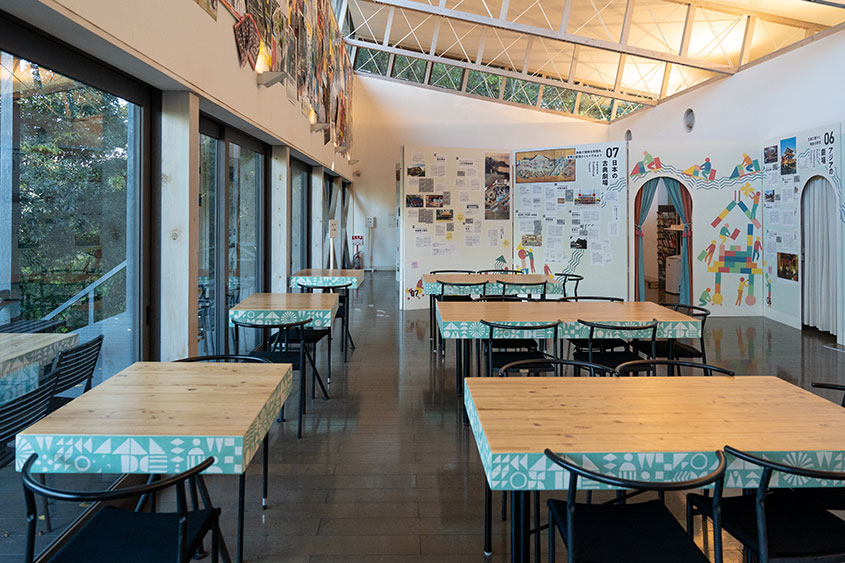
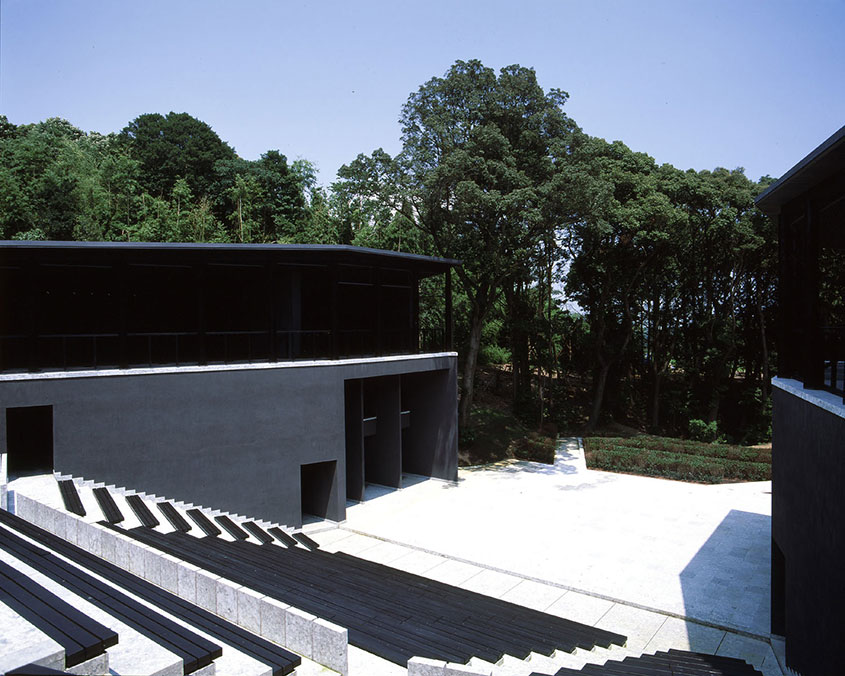
Shizuoka Performing Arts Park/Shizuoka Arts Theatre
- Place
- [Shizuoka Performing Arts Park]
100-1 Hirasawa, Suruga-ku Shizuoka City, Shizuoka, Japan
[Shizuoka Arts Theatre]
2-3-1 Higashishizuoka, Suruga-ku Shizuoka City, Shizuoka, Japan - Time
- Please check the official website of each facility.
- Closed
- Please check the official website of each facility.
Take the same Nihondaira Ropeway (42) bus to the Nihondaira Ropeway Bus Stop, which takes approximately 15 minutes.
Other Points of Interest in Nihondaira
Since the Shizuoka Performing Arts Park is within the vast hill area of Nihondaira, you might as well visit some of its top destinations. Standing at a height of 307 meters, it has been awarded first prize in Japan's Top 100 Tourist Attractions thanks to its breathtaking vistas of Mt. Fuji, tea plantations, Shimizu harbor, the Izu Peninsula, and the Southern Alps.
Nihondaira Yume Terrace
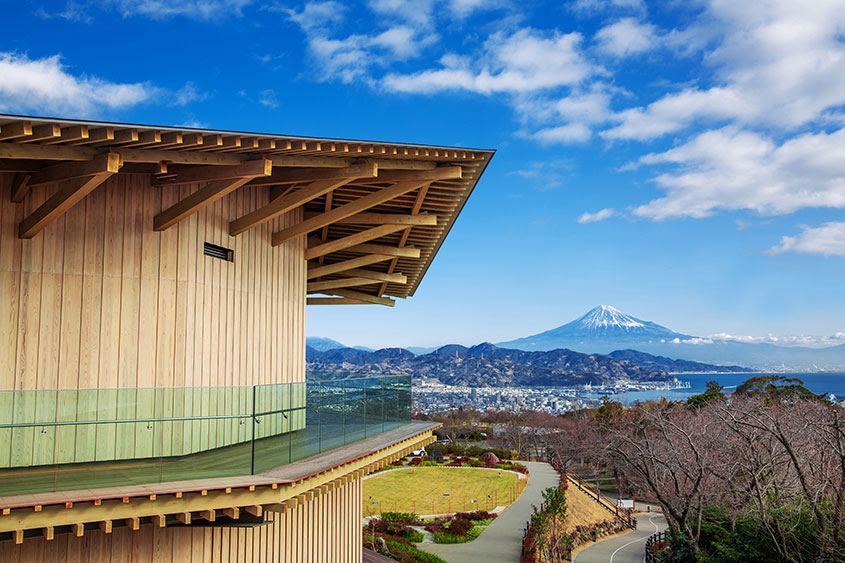
Designed by the acclaimed architectural firm Kengo Kuma and Associates, Nihondaira Yume Terrace is a striking example of architectural harmony with nature, utilizing timber locally sourced from Shizuoka. The facility is spread across three floors, each offering a unique experience. The first floor delves into the history of Nihondaira, featuring 3D Projection Mapping that vividly illustrates its formation. The second floor houses a quaint café, providing the perfect spot for dining and relaxation while enjoying picturesque views. The highlight is the third-floor observation deck, where visitors can immerse themselves in the surreal view of Mt. Fuji, embodying the facility's name 'Yume,' which means 'dreams' in Japanese. Additionally, live camera feeds allow visitors to witness the ever-changing scenes of Mt. Fuji, further enriching the experience.

Nihondaira Yume Terrace
- Place
- 600-1 Kusanagi, Shimizu-ku, Shizuoka City, Shizuoka Prefecture 424-0886
- Time
- Sunday – Friday 9:00 AM – 5:00 PM / Saturday 9:00 AM – 9:00 PM
*Observation Corridor open 24/7 - Closed
- The second Tuesday of each month (If it’s a public holiday, it will operate as usual, and the following day will be closed) and New Year's Eve Holiday (26 - 31 December)
- Brochure
- https://nihondaira-yume-terrace.jp/wp-content/themes/nihondaira/pdf/pamphlet_english.pdf
From the Nihondaira Yume Terrace, make your way down to the Nihondaira Ropeway on foot, which takes approximately 10 minutes.
Nihondaira Ropeway
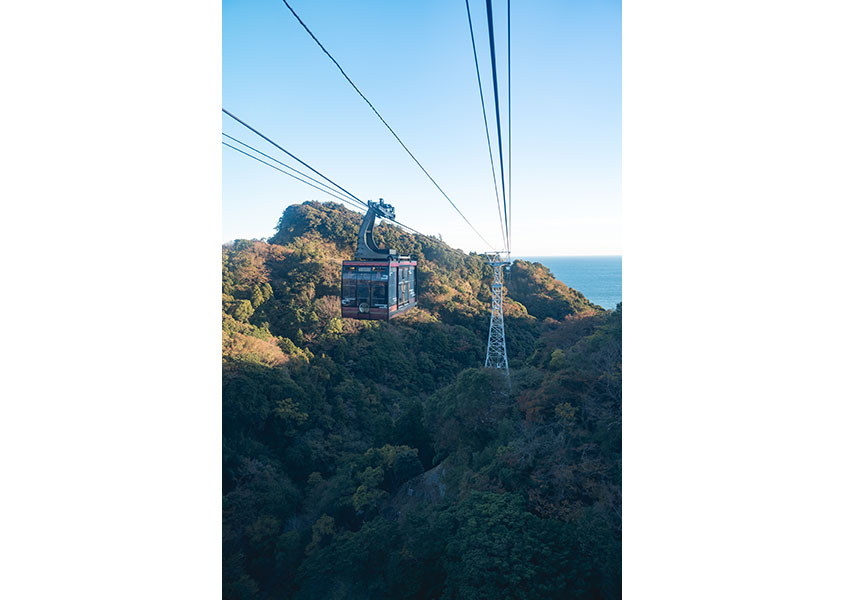
Enhance your experience at Nihondaira with a captivating five-minute journey that connects the peak to Kunozan Toshogu Shrine. This ride offers stunning views of Suruga Bay. It presents an ever-changing tapestry of landscapes, each uniquely adorned by the seasons. Alongside these natural wonders, the facility provides a range of exclusive souvenirs and treats, each a specialty of Shizuoka.
From the Nihondaira Yume Terrace, make your way down to the Nihondaira Ropeway on foot, which takes approximately 10 minutes.
Kunozan Toshogu Shrine
With a history spanning over 400 years, the Kunozan Toshogu Shrine's designation as a National Treasure in 2010 is a fitting tribute. This revered site enshrines Tokugawa Ieyasu, the founder of the Tokugawa Shogunate, which unified Japan in 1603. The shrine is celebrated for its distinctive designs that epitomize the grandeur and artistic richness of the early Edo period.

This style often features a network of annexes connected by passageways adorned with elaborate decorations and paintings. The structures are distinguished by vivid colors, accented with gold and intricate lacquerwork. Each building tells a story through ornate wood carvings, gold leaf decorations, and intricate metalwork, showcasing the era's exceptional craftsmanship.
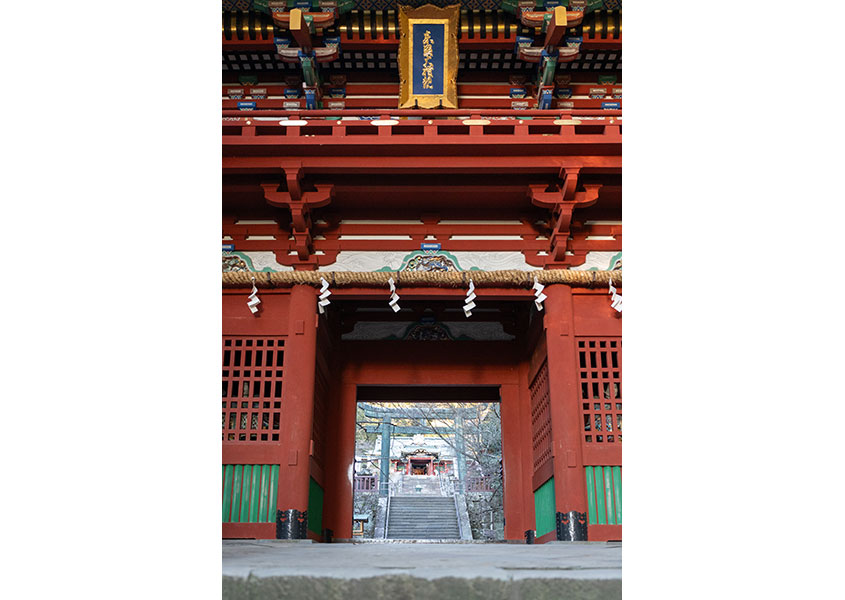
Along with the wood carvings, the paintings also incorporate elements reflecting Shinto beliefs and the legacy of Tokugawa Ieyasu, conveying a message of peace that transcends time.

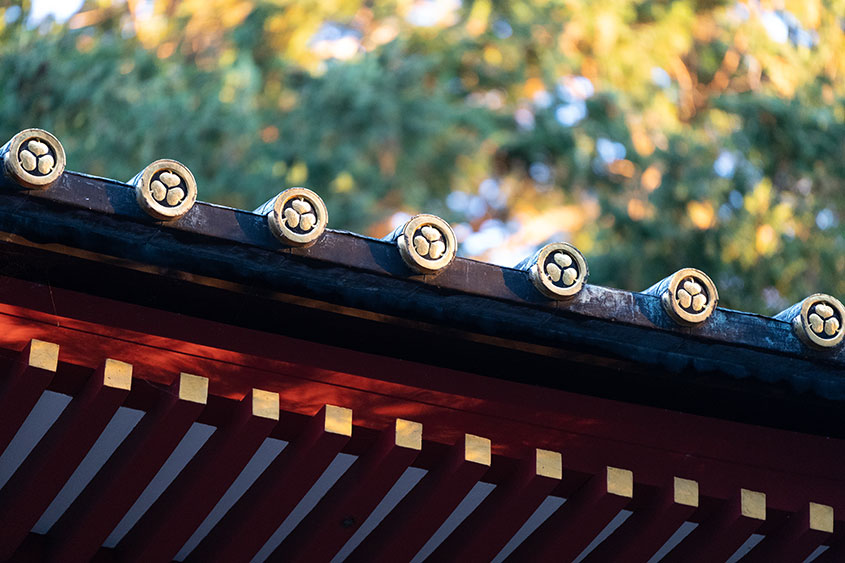
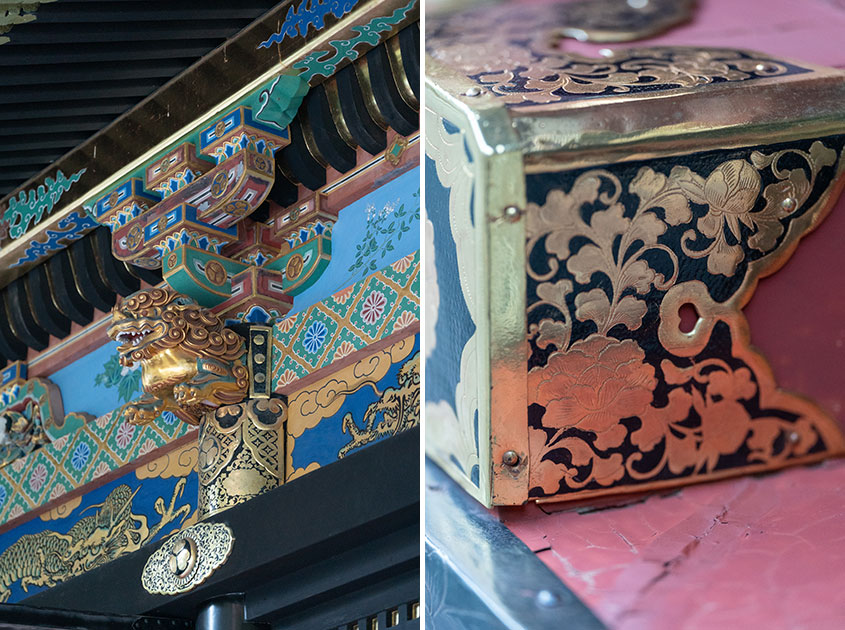
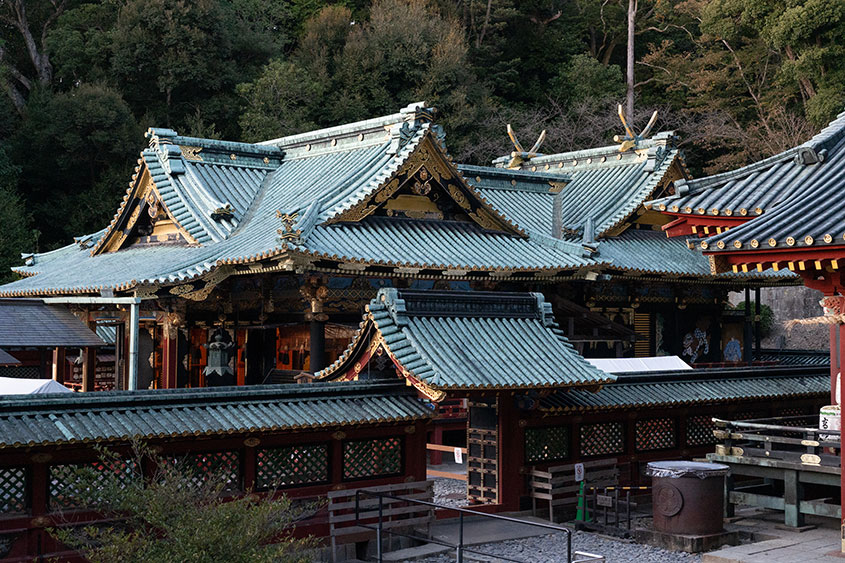
Kunozan Toshogu Shrine
- Place
- 390 Negoya, Suruga-ku,Shizuoka-shi,Shizuoka 422-8011
- Time
- 1 April - 30 September 8:30-17:00 / 1 October - 31 March 8:30-16:00
- Admissions
- ¥610 (¥460 with the Atami 1-Day Pass)
- Link
- https://www.toshogu.or.jp/english/
